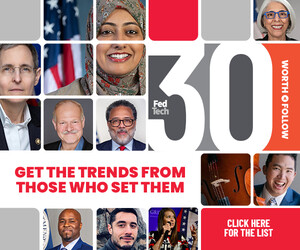Why Human-Centered Design Matters for Federal Employees
HCD means “putting people first” by designing tools and processes that prioritize the needs of those who use them every day, says Theo Gibbs, design manager at Code for America. This approach benefits employees directly, as they are often the primary users of complex systems and software to deliver government services.
“When a federal employee must manage lengthy, cumbersome processes using multiple software platforms, it can lead to frustration and inefficiency,” Gibbs says.
By applying HCD principles, such as researching the daily experiences of employees and understanding their specific challenges, designers can create streamlined tools that significantly reduce processing times.
“This shift not only improves the workday experience by making it more humane but also saves the agency hundreds of hours,” Gibbs says.
When employees have tools that work with them, not against them, both employee satisfaction and program outcomes improve, she says. For program administrators, HCD-driven solutions mean increased efficiency and better service delivery to the public.















